The journey back was as if I were walking through a completely different canyon. Light reached all the way down to the water and everything glowed. There was also no more solitude... hundreds upon hundreds of people now filled the narrow canyon... smoking, perfume, trash, yelling, jumping, splashing, and some of them wearing FAR less clothing than they probably should have been!

The sun peeks into the narrow canyon.

Things begin to glow.
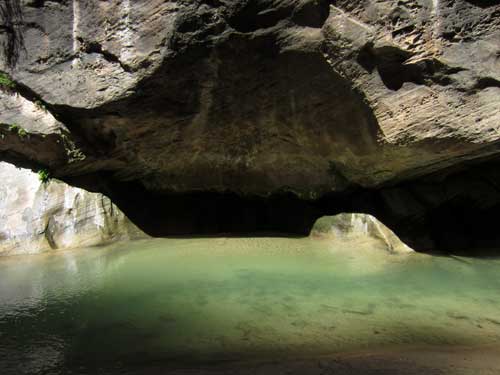

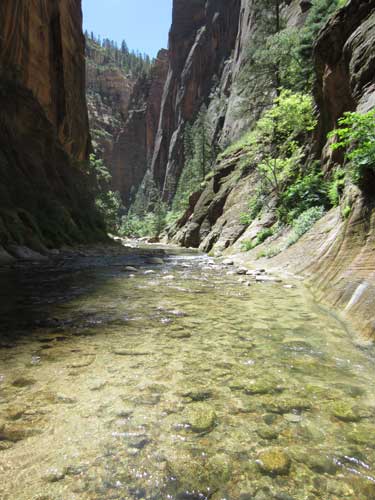

A deep channel to cross





The masses begin to appear.

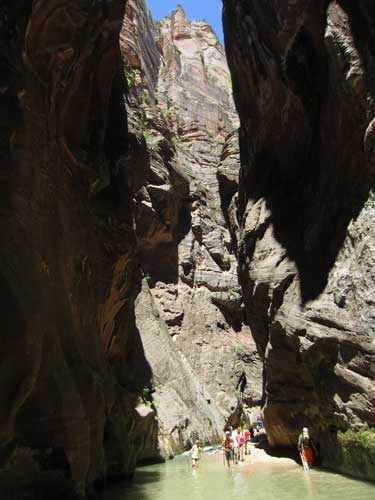
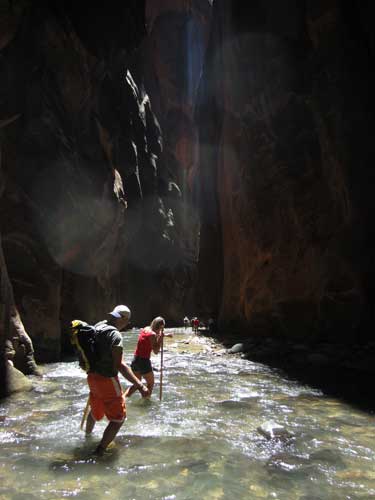








The crowds really thickened the last half mile.


I took more time enjoying the scenery back along the Riverside Walk trail, now that it was actually light out.

A squirrel moves in closer to its next target...

... and turns on the charm.




Many informative signs lined the way.
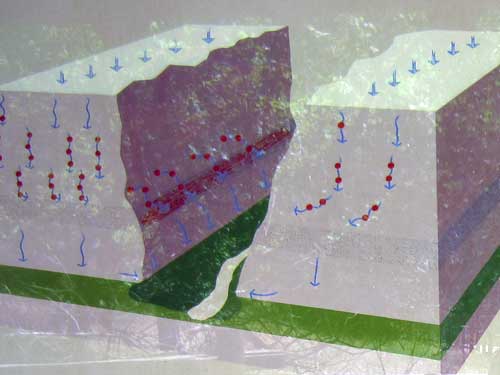
Why are there hanging gardens? Rain and snow from the plateau filter down through porous Navajo sandstone, eventually reaching less porous layers (such as the shale of the Kayenta Formation) where it collects as springs that find their way out through the canyon walls. Plants love this!
I caught the shuttle back to the Human History Museum.


Along with some exhibits, there was also a highly informative movie.
Zion Canyon cuts through the Colorado plateau, which began forming 600 million years ago with sedimentary deposits. 180 million years ago, these was the largest sand dunes ever on the planet! Over time, the sand became pressed into rock (Navajo sandstone) and was 3,000 feet thick. Then 5 - 10 million years ago, the land lifted up to 10,000 feet. Rivers began to carve it up to create all the various canyons.
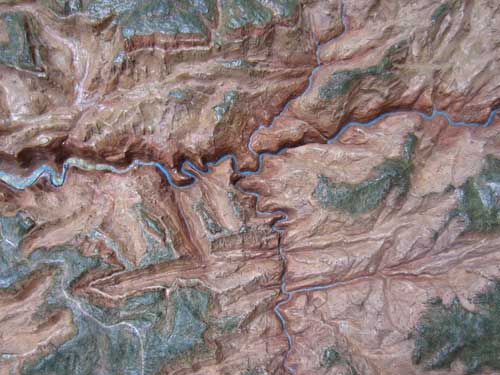
Model of the Narrows
People have been in area for 10,000 years. After the Ancestral Puebloans (Anasazi) and the Fremont, the Southern Paiute arrived, naming this area Mukuntuweap or "straight-up land."
Mormons were the first white settlers. To escape religious persecution, their leader Brigham Young led them to Utah in 1847. In 1858, he sent scout Nephi Johnson to explore the Upper Virgin River. It is thought he travelled as far as the Narrows, and it is his recommendations that led to people settling here. Isaac Behunin was the first to settle in the canyon and call it Zion, a Biblical reference to a "place of refuge" or "place of quiet sanctuary" where he could be free of religious harassment.

Nephi Johnson

Now that's the way to travel! If you look to the lower right of the photo, you can see hand and toe holds chiseled into the rock long ago by the native peoples.

